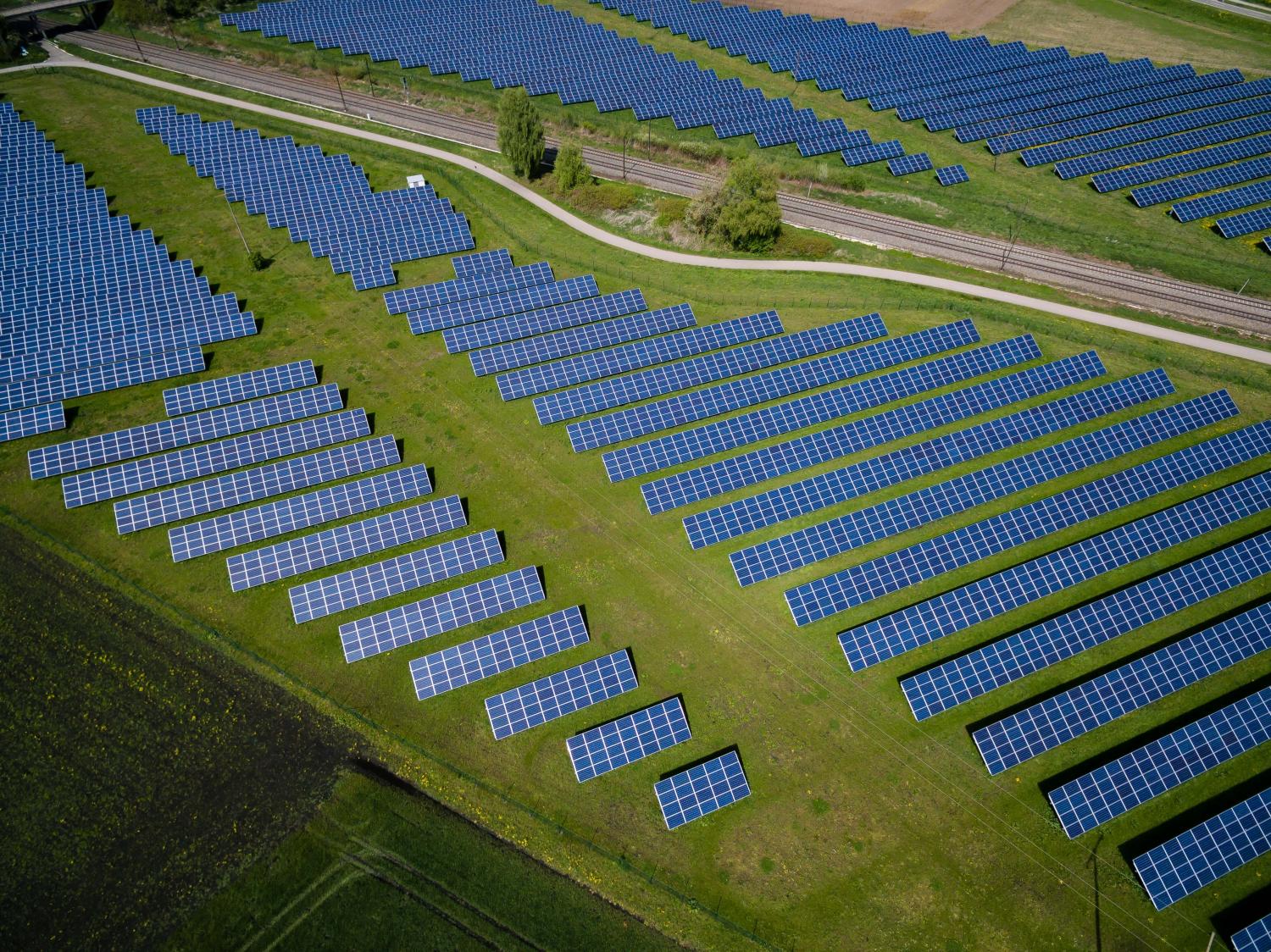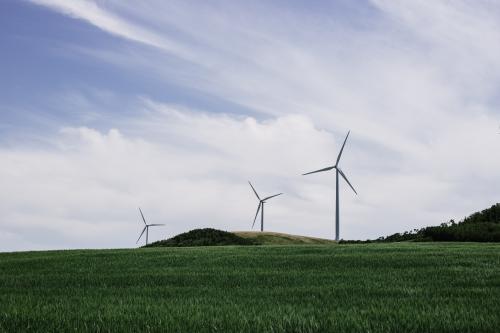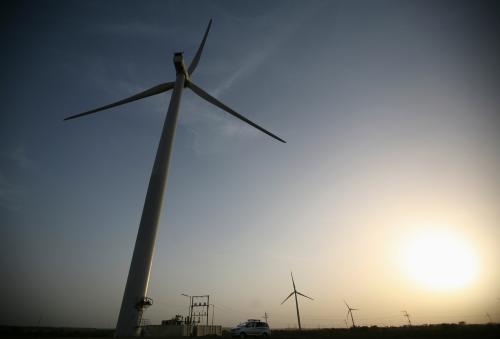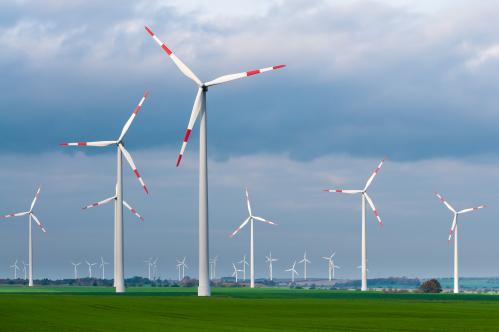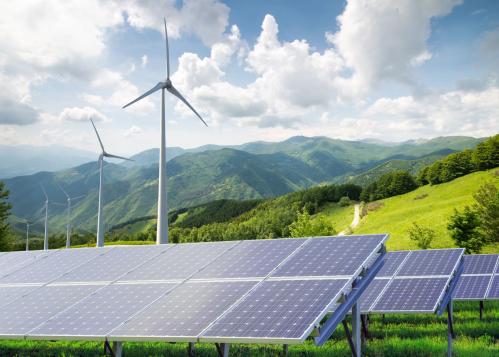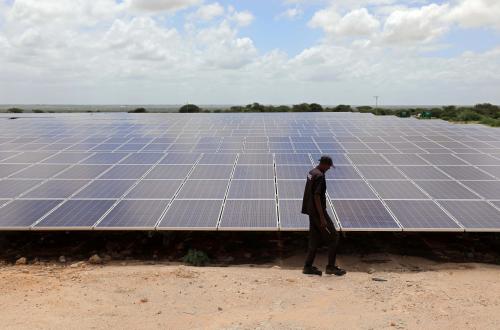Content from the Brookings Institution India Center is now archived. After seven years of an impactful partnership, as of September 11, 2020, Brookings India is now the Centre for Social and Economic Progress, an independent public policy institution based in India.
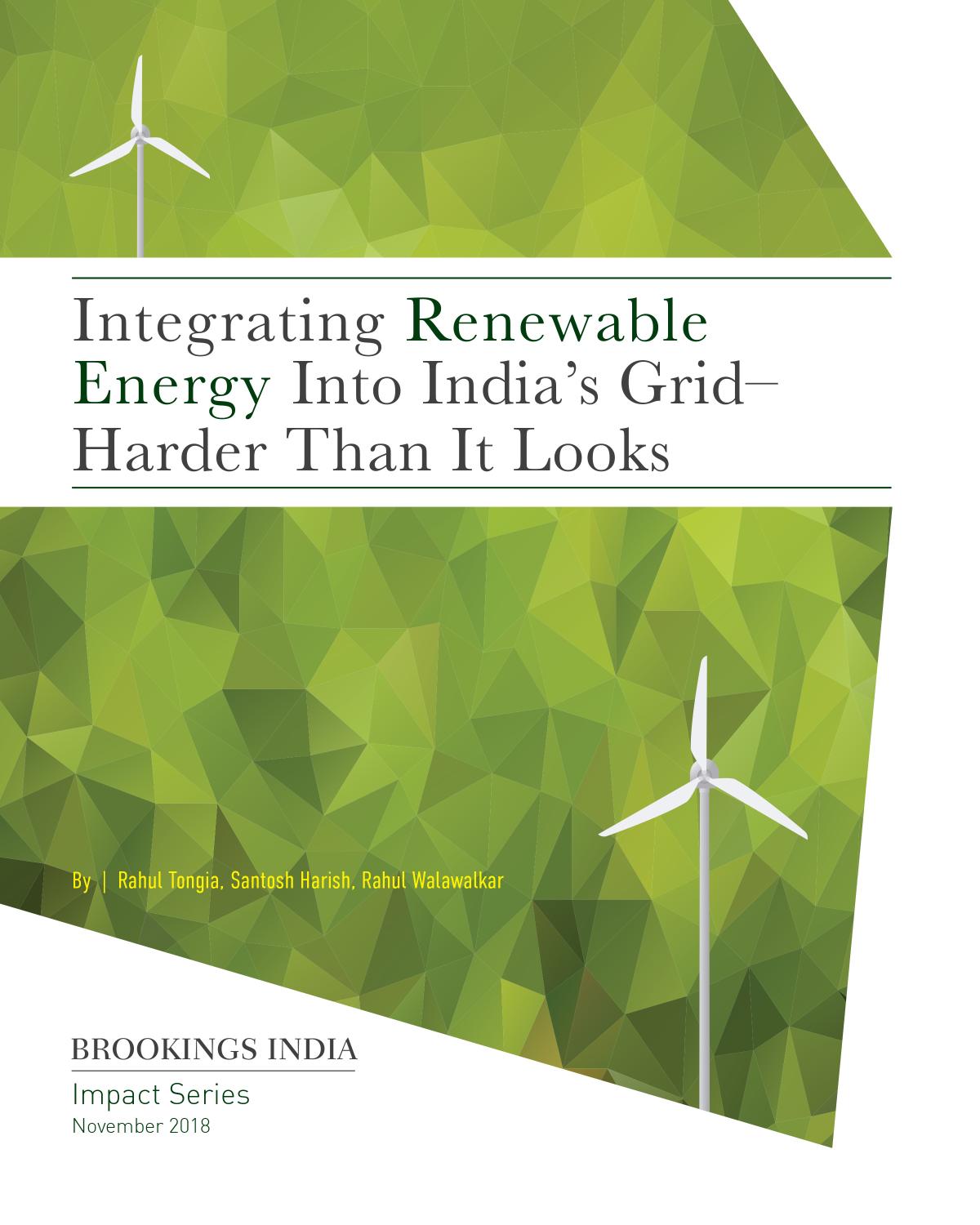
In 2014, India unilaterally announced plans to quadruple Renewable Energy (RE) to 175 GW by 2022, an ambitious target that required an annual growth (CAGR) of over 25 percent. Since then, growth has exploded, especially for grid-scale solar power, which is meant to be 100 of the 175 GW RE targeted.
Until recently, RE was a limited if not a fringe player—even in FY2017 its share of overall generation was only 6.7 percent at a gross level, but the share is rising rapidly. Per targets, this would reach over 19 percent of total demand by 2022. Despite this growth, and the high targets India has set its sights on, a previous Brookings research report points out that there are significant political and economic contradictions that may hinder these dreams from turning into a reality. This paper examines grid integration as a subset of challenges for scaling RE, with financing, contracting, regulation, market design, technology risks, etc. as other issues that will impact the growth trajectory.
The challenges of grid integration for higher RE
Rapid growth in renewables poses challenges for grid operations and has various implications on the finances of distribution companies (Discoms), consumer tariffs and incumbent power generating companies, especially traditional thermal power plants. Integrating renewables at this scale with limited impact on tariffs, minimised curtailment rates, and with stable grid operations will require careful technical studies and discussion of tradeoffs, instruments, and risk-allocation.
In this paper, we focus on some of the major knowledge gaps when it comes to planning for and adapting to the rapid expansion of renewable energy power in India. We begin by giving an overview of the power grid in India, and what the broad challenges of RE integration are. We identify major questions that need to be addressed by the government and the energy policy research community in terms of understanding the system-level costs of RE.
Rapid growth in renewables poses challenges for grid operations and has various implications on the finances of distribution companies (Discoms), consumer tariffs and incumbent power generating companies, especially traditional thermal power plants.
There haven’t been sufficient studies on grid integration, especially ones that combine optimisation, economics, and risk. The Greening the Grid (GTG) study was a ground-breaking effort in this direction, with multiple stakeholders providing inputs and experts across the US and India collaborating. We examine that study to tease out what is or isn’t said (or assumed), and what research and planning focus should be next. We find that integrating high RE into the grid isn’t merely a technical challenge, but one that also faces institutional challenges exacerbated by the fact that RE potential is concentrated in a handful of states in India.
Studies and planning for higher RE
Future studies should build on the GTG analysis by incorporating more data which need to be publicly available. First, states must collect and integrate RE generation data, including backing down (curtailment) with granularity. Second, there must be a systematic and framework aligned analysis to quantify the “hidden” (rather, systems-level) costs of RE. This must clearly incorporate the economics and contractual issues. Ultimately, optimisation studies would become inputs to the next effort of determining the best instruments for managing these system-level costs, ranging from ancillary services, to storage, to Time of Day pricing, etc. It may even involve payments or compensation mechanisms to states that bear a disproportional burden for RE.
At some point, future studies will have to go beyond 15 minute intervals, not just because of ramping issues in short timeframes but also because of grid concerns on transients and stability. Few models can capture unknown risks and low-probability events, such as fuel supply disruptions or shortages of water for cooling towers, and so these remain unavoidable concerns that strengthen the interpretation of any optimisation model to be “best-case”.
Yes, 175 GW RE can be integrated at a national level without major storage needs, but even this will involve more transmission across longer distances. The real challenge comes after, when RE grows far higher.
Yes, 175 GW RE can be integrated at a national level without major storage needs, but even this will involve more transmission across longer distances. The real challenge comes after, when RE grows far higher. The 175 GW target is mostly one that relies on low-hanging fruit of variable RE. Further scaling, towards deep decarbonising of India’s electricity system, is a hard task, and one that will require a host of technical, policy, and regulatory improvements spanning storage, time of day pricing, and flexibility of both operations and of power purchase agreements.
Ultimately, the question of integrating RE isn’t going to be “can we?” but rather “how best can we”?

